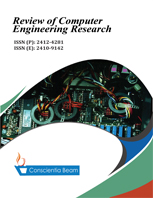Time optimization for simulation of PMD 3D camera
DOI:
https://doi.org/10.18488/76.v11i2.3778Abstract
This research aims to enhance the efficiency of simulating 3D cameras utilizing Photonic Mixer Devices (PMD) technology, crucial for applications in computer vision, robotics, and augmented reality. Despite their significance, the computational demands of simulating PMD 3D cameras present substantial challenges in time and resource management. This study proposes a novel approach to optimizing simulation time without sacrificing accuracy, achieved through advanced algorithms and parallel computing techniques. Through a comprehensive analysis of existing simulation methodologies, bottlenecks are identified, and tailored optimization techniques are implemented. The system is designed to simulate PMD sensors, wherein ray tracing precedes power calculation, essential for determining pixel radiance and irradiance. However, the inherent computational intensity of the sequential power calculation algorithm presents a challenge of speed, particularly for PMD sensor simulation reliant on fast-imaging technology. To address this issue, a parallel algorithm leveraging General Purpose Graphics Processing Units (GP GPUs) is proposed and implemented. Experimentation is carried out on Volta (GV100) Graphics Processing Unit (GPU) with varying block sizes from 32 to 1024 in the multiples of 32. Experimental results demonstrate significant speed enhancements, with a maximum speed up of 78% utilizing Volta GPU with a block size of 1024, thereby showcasing the efficacy of the proposed methodology.





